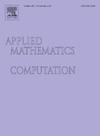Research on monitoring mechanism of autonomous taxi: an evolutionary game approach
IF 3.5
2区 数学
Q1 MATHEMATICS, APPLIED
引用次数: 0
Abstract
As an emerging mode of transportation, autonomous taxis have attracted widespread attention from scholars in various fields. However, theoretical research on how to monitor their operational safety still remains scarce. In light of this, we construct a tripartite game model involving safety regulatory department (SRD), autonomous taxi company (ATC), and passengers using evolutionary game theory (EGT), so as to explore the dynamic evolution of safety supervision mechanism within the entire system. Simulation results indicate that in the basic model (with fixed incentives), the system fails to stabilize at any equilibrium point, implying that a robust regulatory mechanism can never be established. Consequently, we delve into the effects of three dynamical incentive mechanisms: dynamical punishment control, dynamical reward control, and dynamical reward-punishment control. Our findings reveal that dynamical punishment control is detrimental to the stabilization of passenger supervision strategies, while dynamical reward control is highly sensitive to changes in reward parameters. In contrast, the dynamical reward-punishment model demonstrates robustness, contributing to the establishment of a safety supervision system jointly maintained by passengers and self-driving taxi companies. We hope this work provides novel theoretical insights into how to substantially improve the safety of autonomous taxi services.
基于进化博弈方法的自动驾驶出租车监控机制研究
自动驾驶出租车作为一种新兴的交通方式,受到了各领域学者的广泛关注。然而,如何监测其运行安全的理论研究仍然很少。基于此,本文运用演化博弈论(EGT)构建了安全监管部门(SRD)、自动驾驶出租车公司(ATC)和乘客三方博弈模型,探讨了整个系统内安全监管机制的动态演化。仿真结果表明,在基本模型(固定激励)下,系统在任何平衡点都无法稳定,这意味着永远无法建立稳健的监管机制。因此,我们深入研究了动态惩罚控制、动态奖励控制和动态奖惩控制三种动态激励机制的作用。研究结果表明,动态惩罚控制不利于乘客监管策略的稳定,而动态奖励控制对奖励参数的变化高度敏感。相比之下,动态奖惩模型具有鲁棒性,有助于建立乘客和自动驾驶出租车公司共同维护的安全监管体系。我们希望这项工作能为如何大幅提高自动驾驶出租车服务的安全性提供新颖的理论见解。
本文章由计算机程序翻译,如有差异,请以英文原文为准。
求助全文
约1分钟内获得全文
求助全文
来源期刊
CiteScore
7.90
自引率
10.00%
发文量
755
审稿时长
36 days
期刊介绍:
Applied Mathematics and Computation addresses work at the interface between applied mathematics, numerical computation, and applications of systems – oriented ideas to the physical, biological, social, and behavioral sciences, and emphasizes papers of a computational nature focusing on new algorithms, their analysis and numerical results.
In addition to presenting research papers, Applied Mathematics and Computation publishes review articles and single–topics issues.

 求助内容:
求助内容: 应助结果提醒方式:
应助结果提醒方式:


